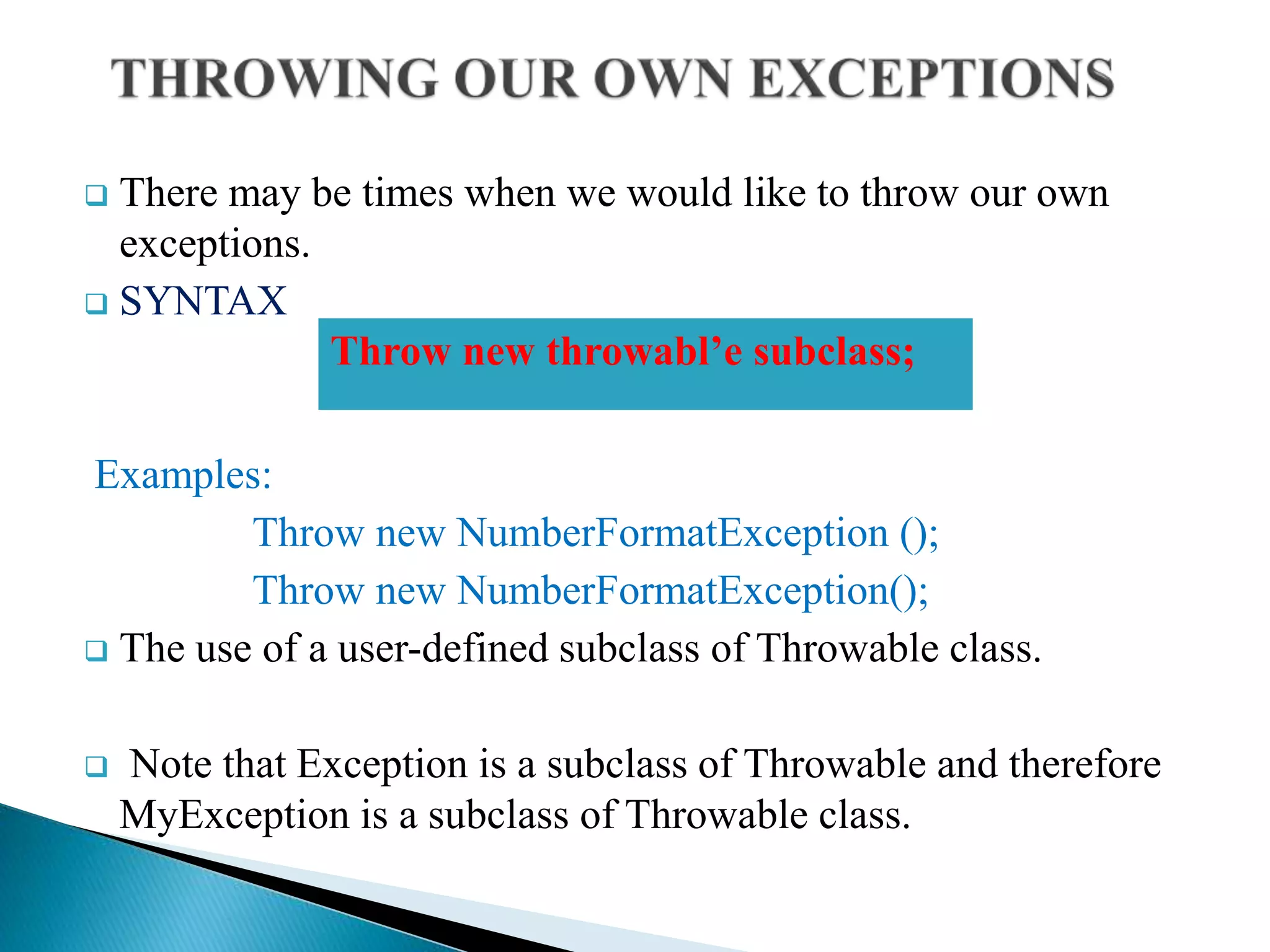Exception handling mechanisms allow programs to detect and respond to runtime errors or exceptional circumstances. They work by finding the problem, informing that an error occurred, receiving error information, and taking corrective action. Exceptions are caused by errors and thrown by the Java interpreter. There are different types of exceptions like ArithmeticException or ArrayIndexOutOfBoundsException. Exceptions can be checked, which must be explicitly handled, or unchecked, which are not necessarily handled in code. Try/catch blocks are used to handle exceptions by trying code that could cause exceptions and catching specific exception types to process them. Programs can also throw their own custom exceptions.
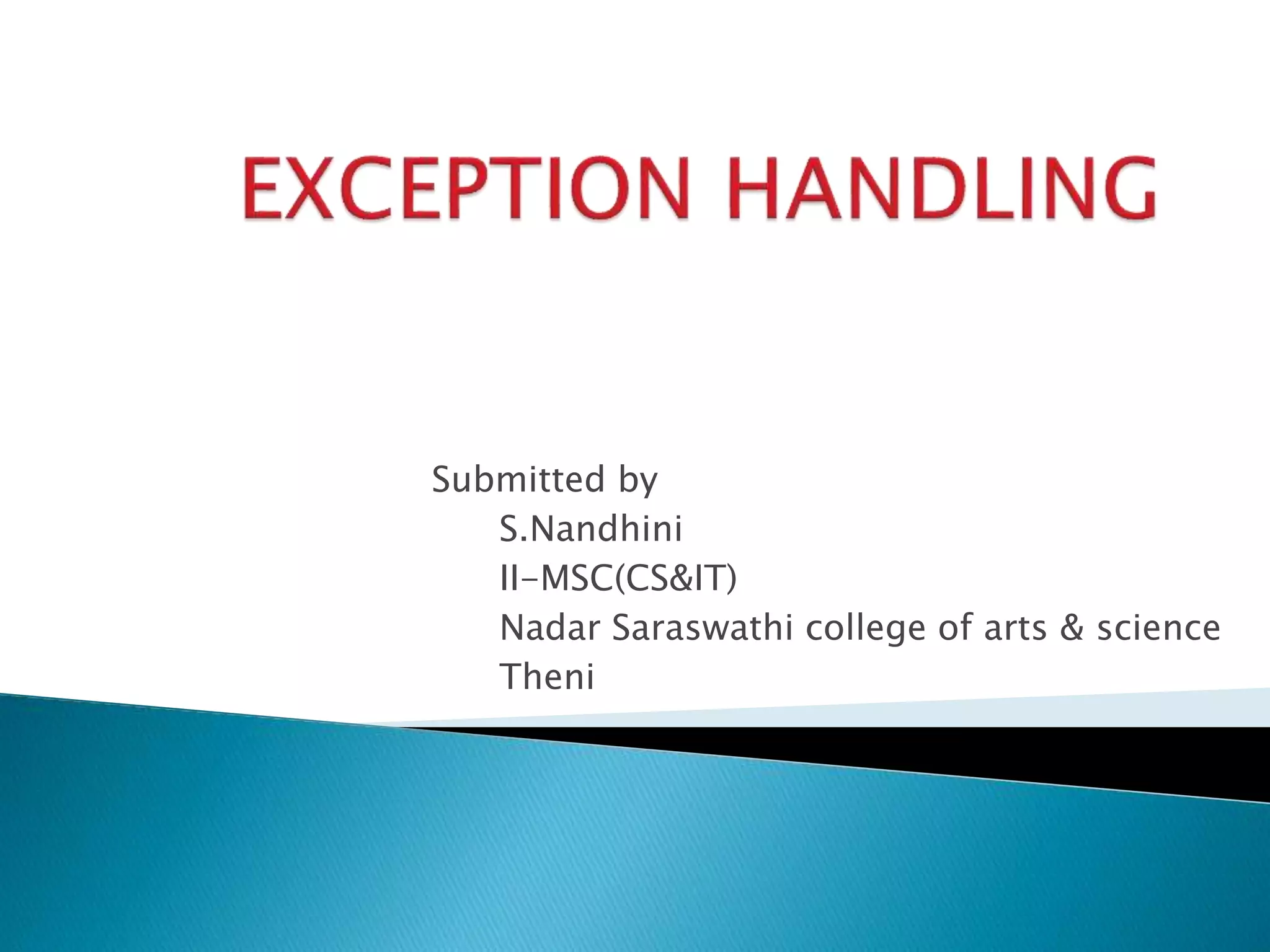
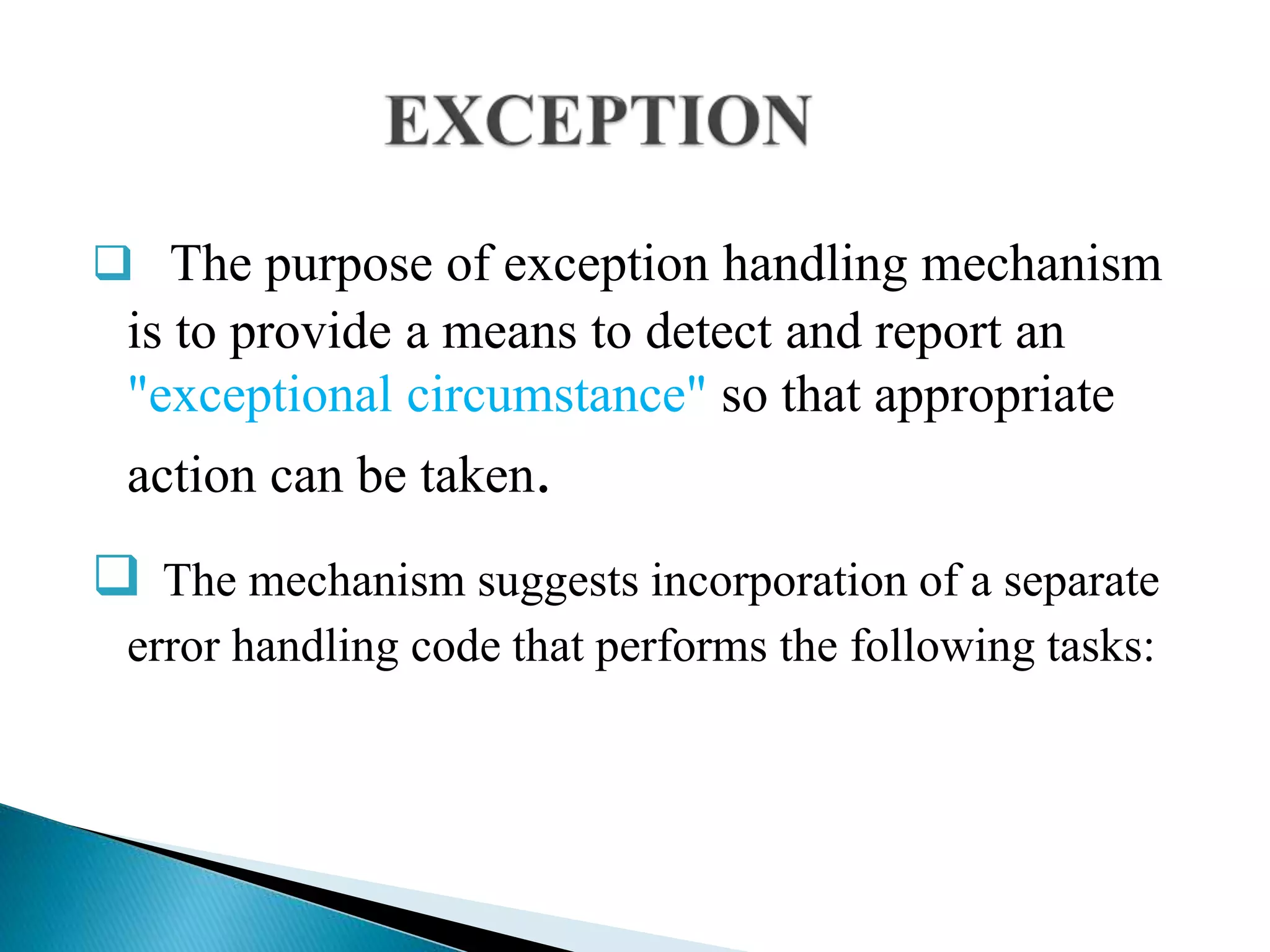


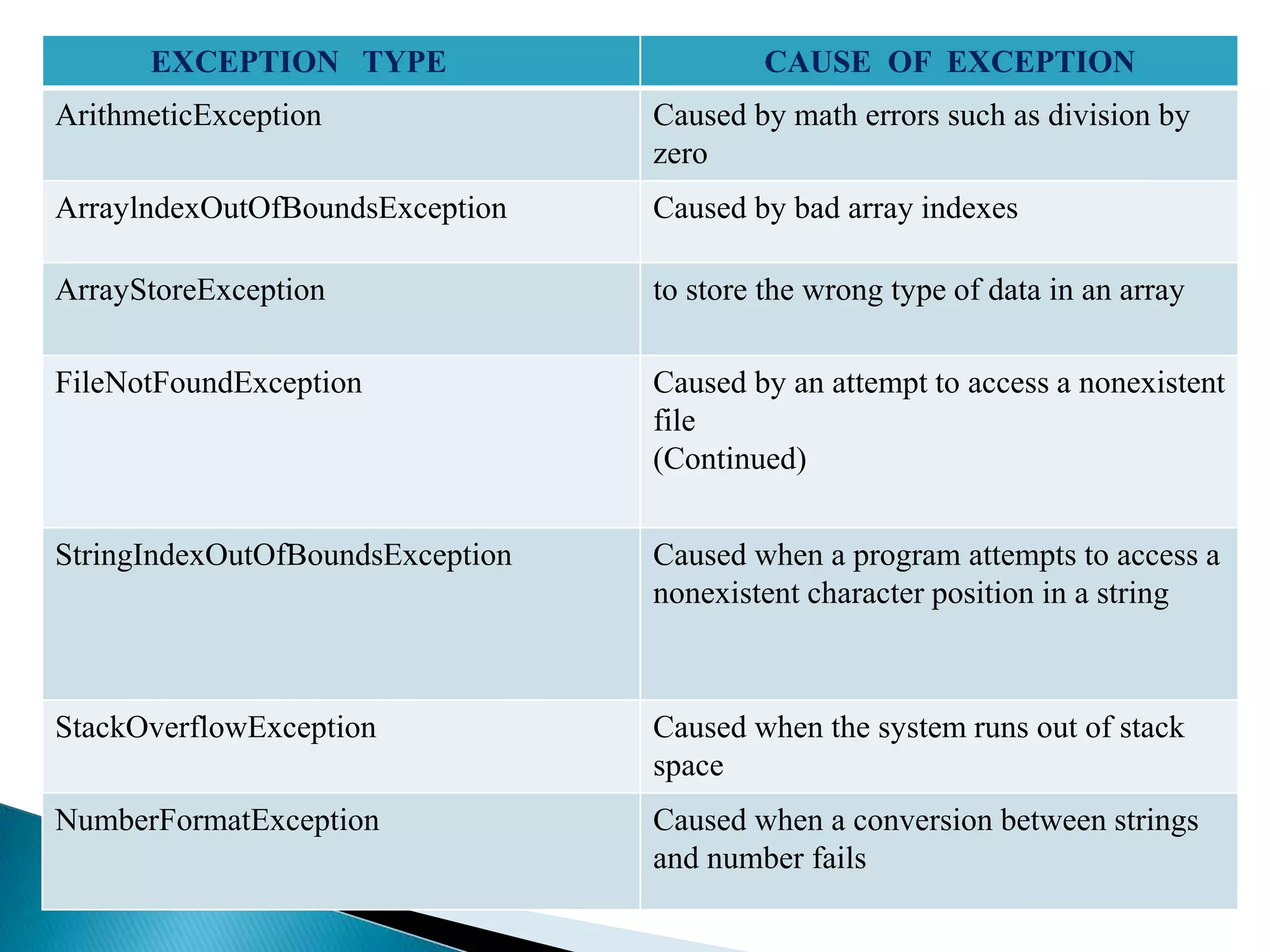
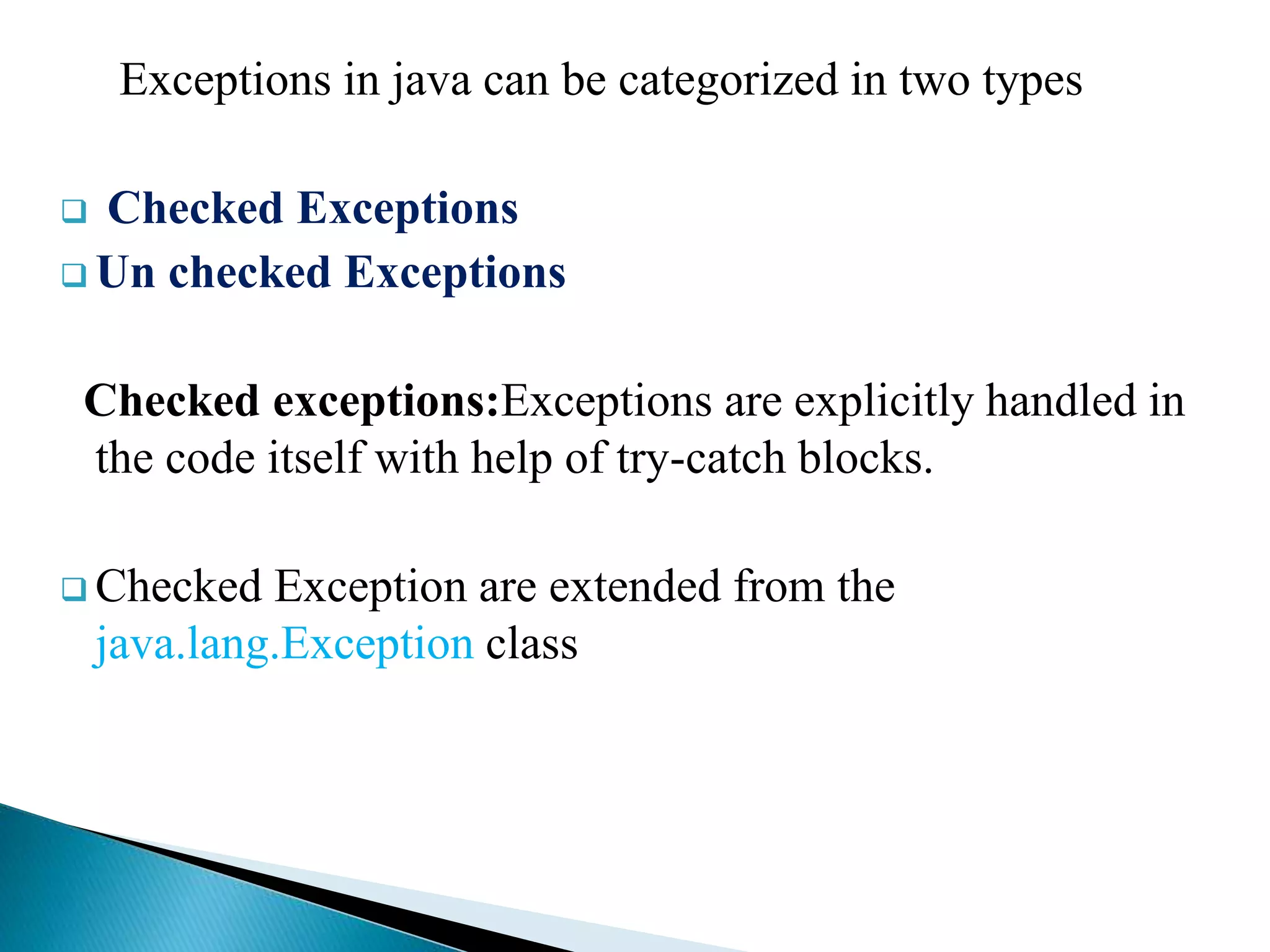
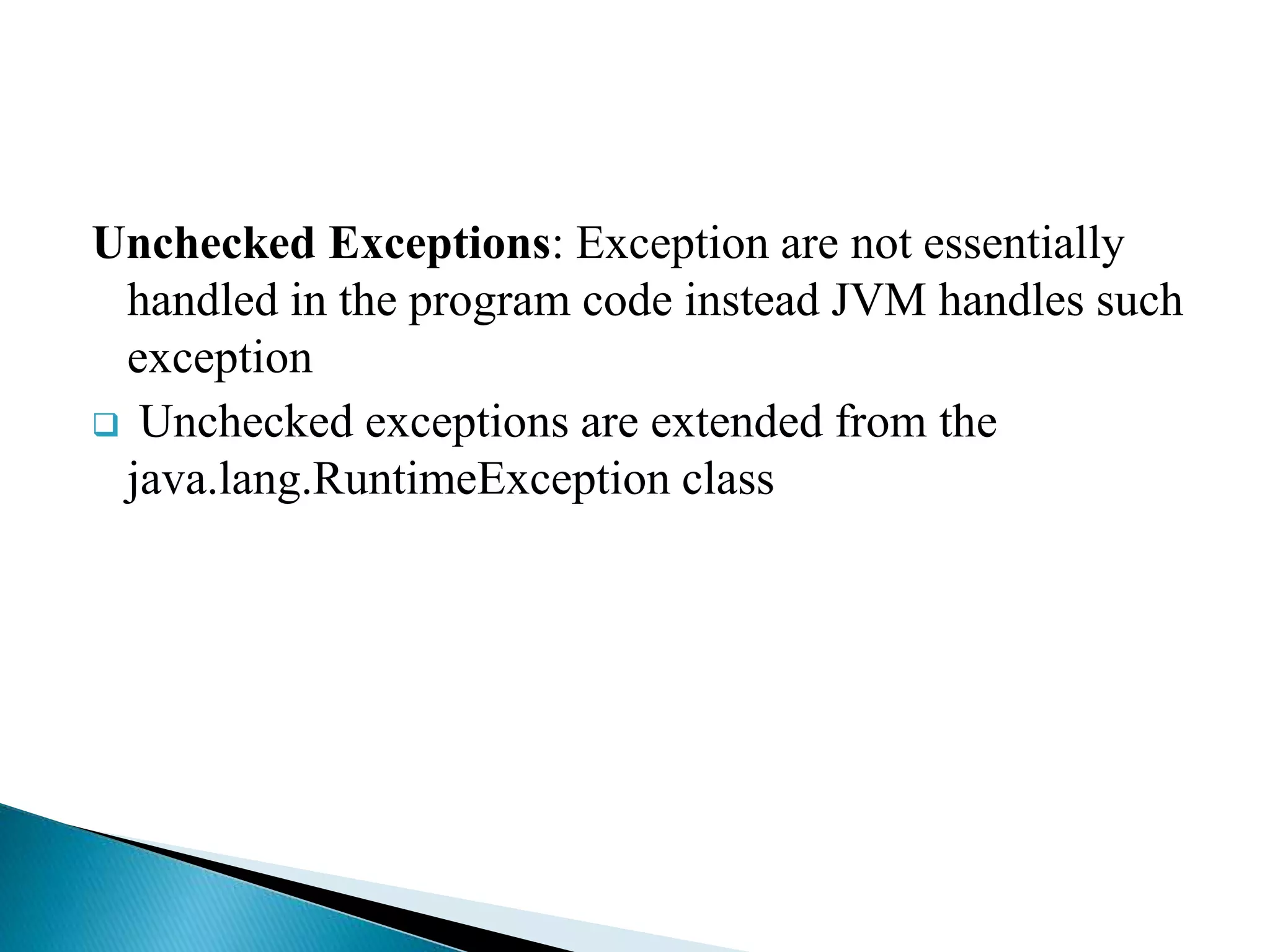

![class Error3
{
public static void main (String args[ ] )
{
int a = 10; int b = 5; int c = 5; int x, y ;(Continued)
try
{
x = a I (b-c) ; // Exception here
}.
catch (ArithmeticException e)
{
System.out.println(“Division by zero");
}
y = a I (b+c) ;
System.out.println(u y = U + y);
}
}
output: Division by zero. y = 1](https://image.slidesharecdn.com/javappt-180920045445/75/exception-handling-in-java-9-2048.jpg)
